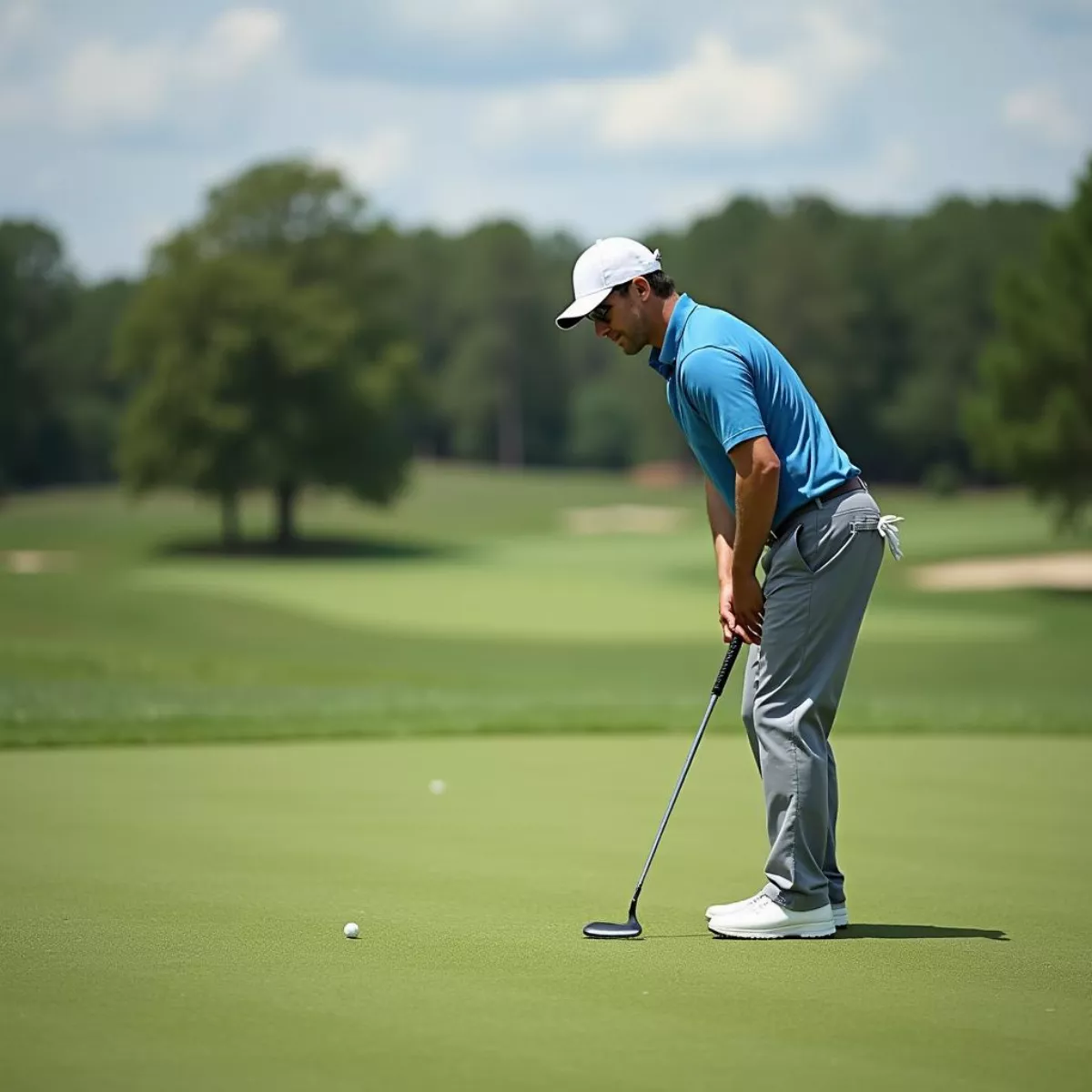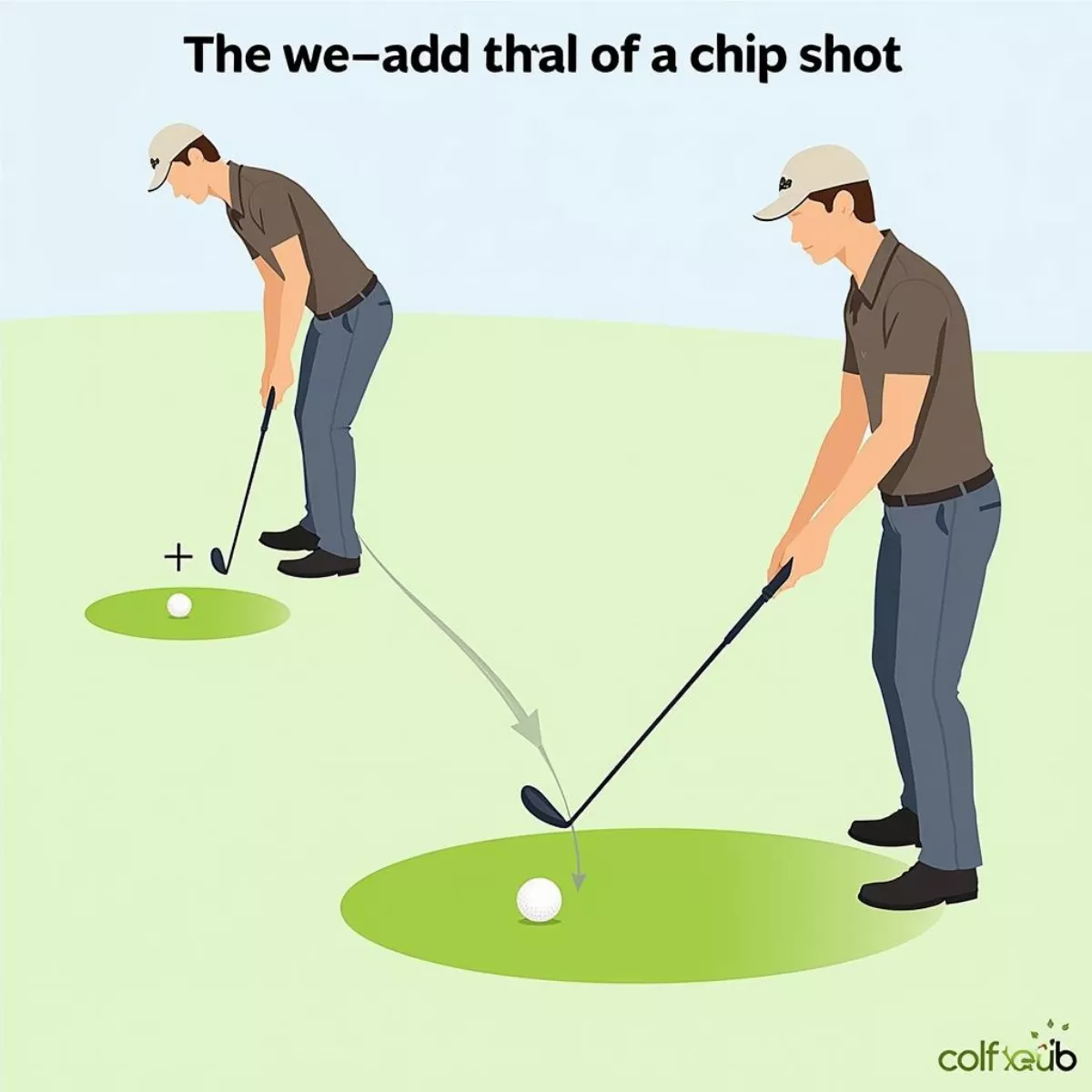When it comes to mastering the game of golf, chipping is an essential skill that can significantly impact your overall performance on the course. A well-executed chip can save you strokes and build your confidence. However, many golfers often find themselves in a quandary about which club to use for chipping. In this article, we’ll discuss the key factors to consider when choosing a chipping club and provide some tips to improve your technique.
Understanding the Basics of Chipping
Chipping is a short game technique primarily used to get the ball onto the green from close distances. This skill is crucial for those tricky shots around the green where a full swing is unnecessary. Let’s break down the key aspects of chipping:
What Is Chipping?
Chipping involves hitting the ball from a short distance, usually within 30 yards of the green, with the intent of getting it to roll towards the hole. Unlike a full swing, chipping requires precision, touch, and the ability to read the green better.
Why Is Choosing the Right Club Important?
Choosing the right club for chipping can make a world of difference in how well you execute the shot. Factors such as the distance to the pin, the terrain, and the condition of the grass all play a role in selecting the appropriate club.
What Are Common Clubs Used for Chipping?
There are a few key clubs that are often used for chipping. These include:
- Pitching Wedge (PW): Ideal for shots that need more height and spin. Great when you have a little more room to work with.
- Gap Wedge (GW): Offers a balance between distance and control. Useful for moderate chip shots.
- Sand Wedge (SW): Best for chip shots from the sand or when you need to get the ball up quickly over obstacles.
- Lob Wedge (LW): Ideal for high, soft landings when you need to clear something and stop quickly.
- 9-Iron or 8-Iron: Useful when you want a lower flight with more roll. Great for delicate chip shots where distance control is necessary.
- Chipping Putter: Some golfers prefer using their putter for low-chip shots on very tight lies or when the grass is short.
Choosing the Right Club: Factors to Consider
Choosing the right club isn’t just about preference; it involves understanding several other critical factors. Here’s what you should consider:
| Factor | Details |
|---|---|
| Distance | How far are you from the hole? |
| Lie of the Ball | Is the ball in the rough, fairway, or sand? |
| Green Conditions | Are the greens fast, slow, or undulating? |
| Obstacles | Are there any bunkers, tall grass, or other hazards? |
| Personal Comfort | Which clubs do you feel most confident with? |
 Golfer Assessing the Green to Choose the Right Club
Golfer Assessing the Green to Choose the Right Club
Key Techniques for Effective Chipping
Now that you have a better understanding of the clubs available for chipping, let’s focus on improving your technique. Here are some essential tips to help you chip with confidence:
- Assess the Shot: Before you pick a club, take a moment to assess the situation. Look at the distance, obstacles, and green conditions.
- Stance and Grip:
- Keep your feet close together and your weight slightly forward.
- Use a light grip to maintain touch and feel.
- Ball Position:
- Place the ball slightly back in your stance for most chip shots. This helps in making clean contact.
- The Swing:
- Focus on a pendulum motion with your arms while keeping your wrists firm.
- Use your body for support, ensuring you maintain a smooth tempo.
- Follow Through:
- Don’t decelerate after contact. A solid follow-through is vital for distance control.
 Golfer Executes a Chip Shot
Golfer Executes a Chip Shot
Common Chipping Mistakes to Avoid
Even experienced golfers can fall into poor chipping habits. Here are some common mistakes to watch out for:
- Poor Club Selection: Not considering the factors above can lead to frustration on the course.
- Too Much Wrist Action: This can lead to inconsistent contact and erratic ball flight.
- Decelerating: Slowing down your swing can lead to poor distance control.
- Ignoring the Green: Always take time to read the green before chipping.
Practice Makes Perfect: Drills to Improve Your Chipping
To enhance your chipping skills, practice is crucial. Here are a few drills to incorporate into your routine:
- Target Practice: Set up targets on the green from various distances and practice chipping towards them with different clubs.
- Obstacle Drills: Place objects, like cones or clubs, in your chipping area to simulate obstacles and practice chipping around them.
- Feel the Roll: Use your putter to chip the ball towards the hole from different distances and try to get it to stop near the pin.
 Golfer Practicing Chipping Drills on the Green
Golfer Practicing Chipping Drills on the Green
Key Takeaways
- Choosing the Right Club is Essential: Understand your options such as Pitching Wedge, Gap Wedge, and Lob Wedge for various chipping scenarios.
- Assess Before You Swing: Always evaluate distance, lie, and obstacles before selecting your club.
- Focus on Technique: Maintain a solid stance, grip, and swing technique for better accuracy.
- Avoid Common Mistakes: Be mindful of poor club selection, excess wrist movement, and decelerating on shots.
- Practice Regularly: Incorporate targeted drills into your regimen to improve your chipping skills.
Frequently Asked Questions (FAQ)
- What is the best club for chipping?
- The best club depends on the situation; however, a pitching wedge or sandbox wedge is commonly recommended for most chip shots.
- Can you chip with a putter?
- Yes, using a putter for low-chip shots on tight lies is effective, especially on very short grass.
- How do I know where to position the ball?
- Place the ball slightly back in your stance for most chip shots, but adjust based on the specific shot requirements.
- How important is practice for chipping?
- Practice is vital. Regularly practicing different kinds of chip shots will significantly improve your consistency and confidence.
- What is a common mistake in chipping?
- A frequent mistake is using poor club selection without assessing the distance and conditions accurately.
Remember, chipping is a skill that requires attention and practice. By focusing on the right clubs, refining your technique, and avoiding common pitfalls, you can become a more confident chipper on the course. Happy golfing!